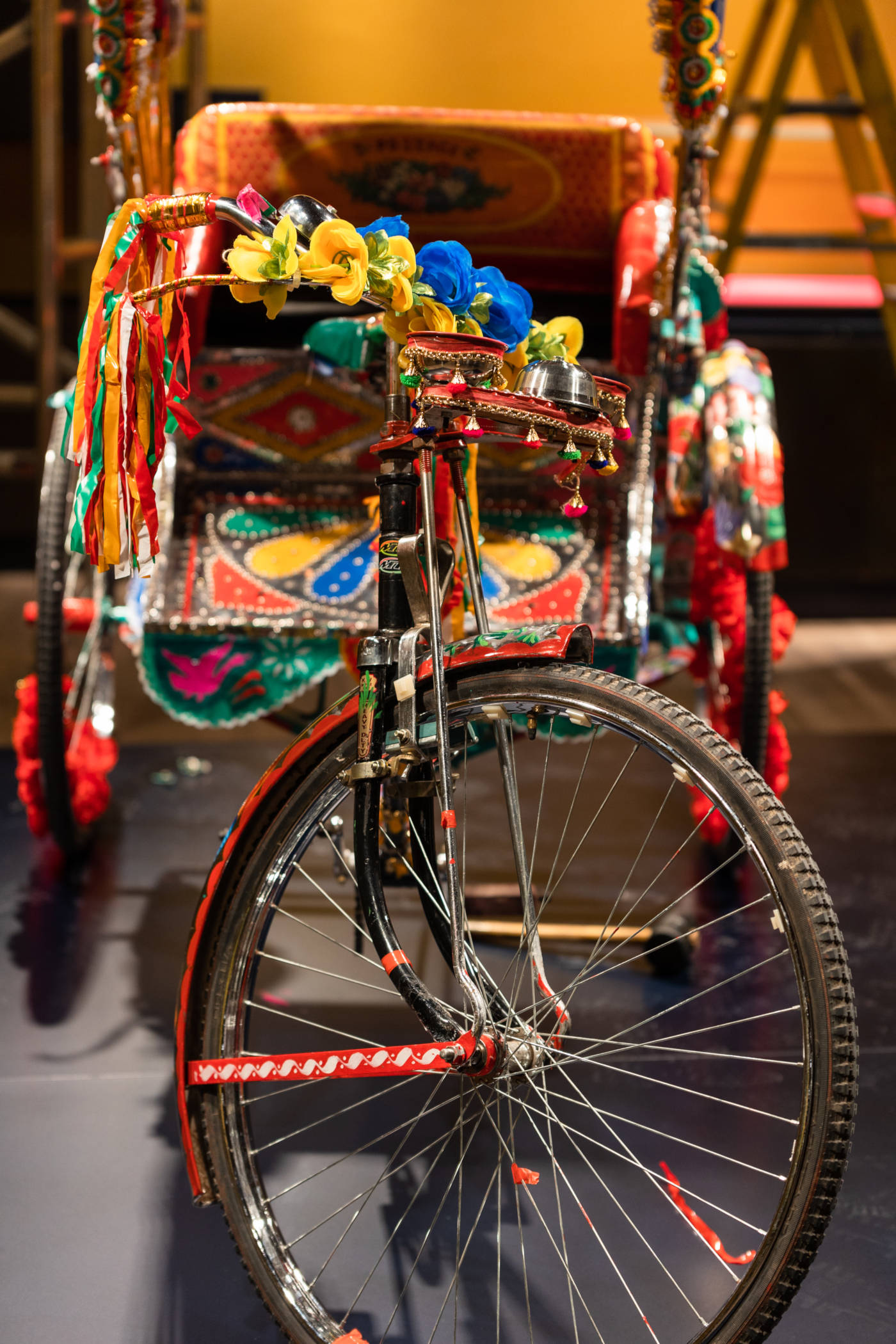
in 中文-普通话 / 国语 / Mandarin Chinese (simplified) translated by Junyu Li
This object has been translated into 11 different languages by 12 different users
这一辆在南亚展厅展出的人力车是曼彻斯特博物馆和其长期合作的艺术家和团体共同打造的。人力车在许多亚洲国家是一种主要的交通工具,车身常常带有一些颜色鲜艳的装饰品。人力车和自行车一样靠脚踏运作,不需要汽油,是一种绿色环保的交通工具。这辆人力车的装饰灵感来自许多南亚电影,比如尼泊尔的《灿烂阳光》、斯里兰卡的《帕拉迪西》(音译名)和不丹的《教室里的一头牦牛》。你会选择哪种方式云游四方呢?
Do you have something you’d like to say, in your own language or English, about the object or translation? We’d like to hear what you think.
Translations are community-sourced and for anyone to participate in, however you use your language. For more information, see Community Guidelines.
17 Jul, 2025
An important mode of transport for short distance, pulled by Man and total of three persons can sit. Others can stand behind, small kids sit on the platform. So Eight seater vehicle with zero pollution 😍
22 Jan, 2025
Three wheeled pedicaps or rickshaws like this one are a primary mode of transportation in Bangladesh. Specially in urban areas they are used for commuting to work and social trips. Rickshaws are decorated with a variety of designs, flowers, birds and movie stars. I used rickshaws to travel to college and I was living there.
22 Jan, 2025
Bengali text for the comment above
তিন চাকার পেডিক্যাপ বা এই ধরণের রিকশা বাংলাদেশে পরিবহনের একটি প্রধান মাধ্যম। বিশেষ করে শহরাঞ্চলে এগুলি কর্মক্ষেত্রে যাতায়াত এবং সামাজিক ভ্রমণের জন্য ব্যবহৃত হয়। রিকশাগুলিতে বিভিন্ন নকশা, ফুল, পাখি এবং চলচ্চিত্র তারকাদের ছবি দিয়ে সজ্জিত করা হয়। আমি কলেজে যাতায়াতের জন্য রিকশা ব্যবহার করতাম এবং আমি সেখানে থাকতাম।
31 Oct, 2023
Picture from a Rickshaw-making workshop at Manchester Museum.
20 Apr, 2023
There is an image from the National Museum of China with a caption describing rickshaws:
“Rickshaws were initially introduced to China from Japan. They were widely used in towns and cities. At first the wheels were made of iron, but at the end of the 19th century they were replaced by rubber wheels. Since 1913, all the bodies of rickshaws in Shanghai had been painted with yellow tung oil or yellow lacquer. Since then, rickshaws have flourished in the city for their ease of hire and low fares.”
20 Apr, 2023
Here are the original Chinese text and a link to see the image:https://www.chnmuseum.cn/zp/zpml/201812/t20181218_24272_wap.shtml
人力车最初由日本传入中国,故亦称“东洋车”。曾广泛流行于大小城镇。开始车子双轮为铁制,19世纪末改为橡皮车轮。从1913年起上海人力车车身全部漆上了黄色桐油或黄漆,因此又称为“黄包车”。此后城市中人力车以雇用方便、车资低廉而久盛不衰。照片中所摄为民国年间北平一人力车聚集处,其中一些车上已经有乘客入座了。
Wikipedia on this:https://zh.m.wikipedia.org/zh-cn/%E9%BB%83%E5%8C%85%E8%BB%8A
人力车,又称作黄包车,或者东洋车,洋车,是一种依靠人力的交通工具,一般有两个轮子,上有座位可坐一到二人,由一个人在前面拉行(也有的洋车后边有人推) 人力车主要在19世纪末到20世纪初,汽车尚未发达的时代,在亚洲各国的城市地区作为主要的交通工具。20世纪后半以后其交通工具的功能,逐渐被三轮车或机动三轮车所取代,现在主要是在观光景点使用。
31 Mar, 2023
How do you usually travel around?
I like travelling around by the good old-fashioned way – walking. It is my favourite thing to do.
Walking is not only one of the easiest ways of exercise, but it is also a great benefit for mental
health and wellbeing. More specifically, I have noticed that walking helps me relax and reduce
stress during the day. Walking outdoors, also, exposes people to natural sunlight and removes
the risk of seasonal depression, which usually occurs in fall and winter and personally, I find
it extremely important. Lastly, it costs nothing and helps me explore the beautiful city of
Manchester and its architecture.